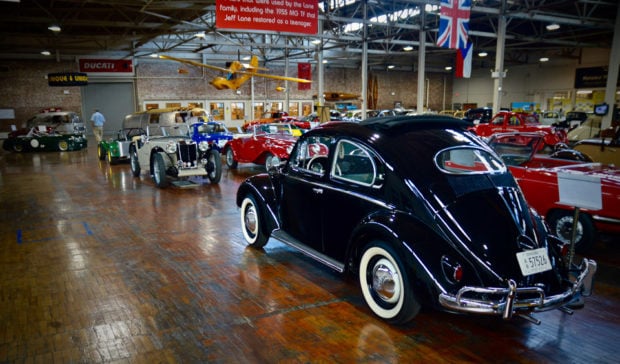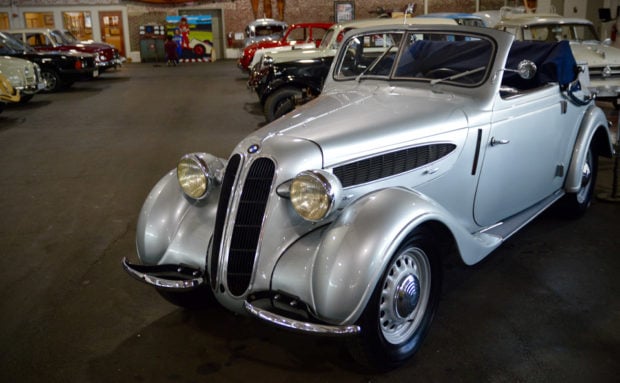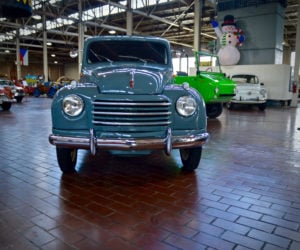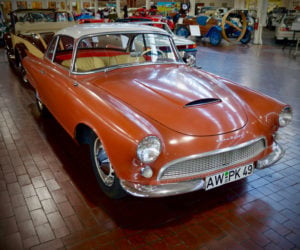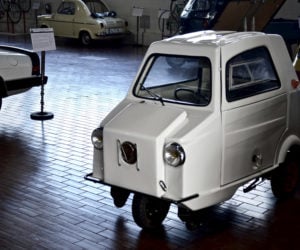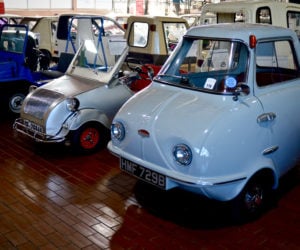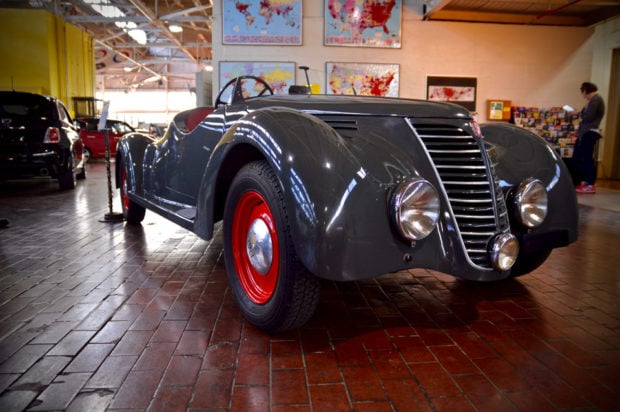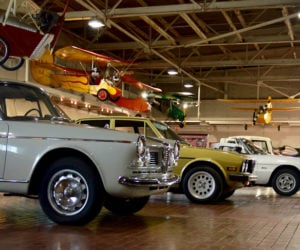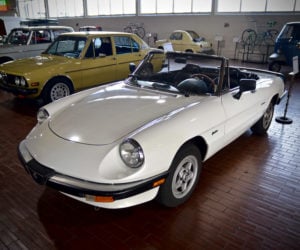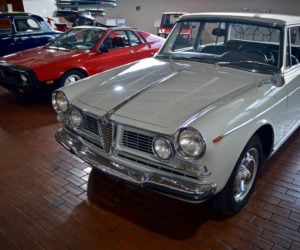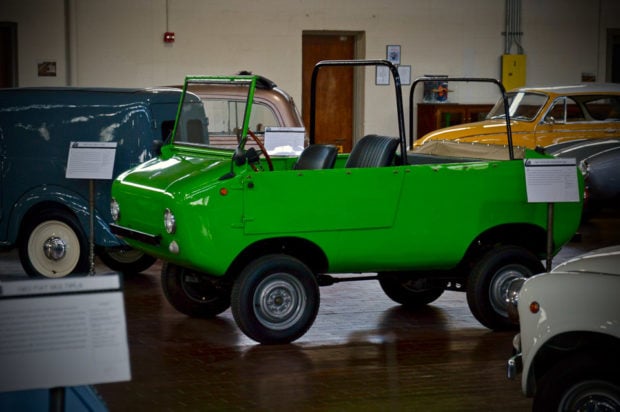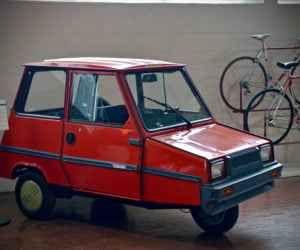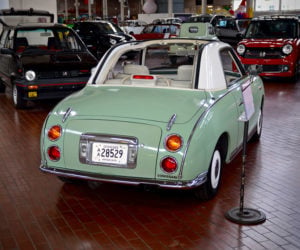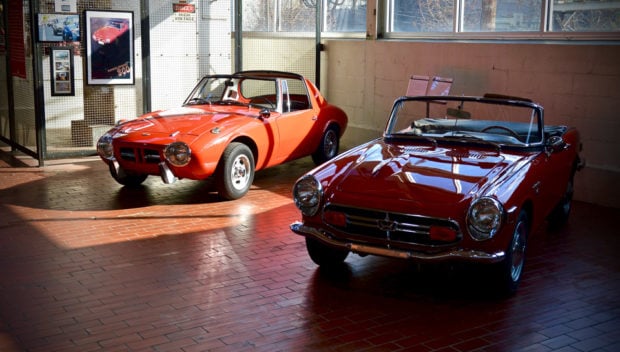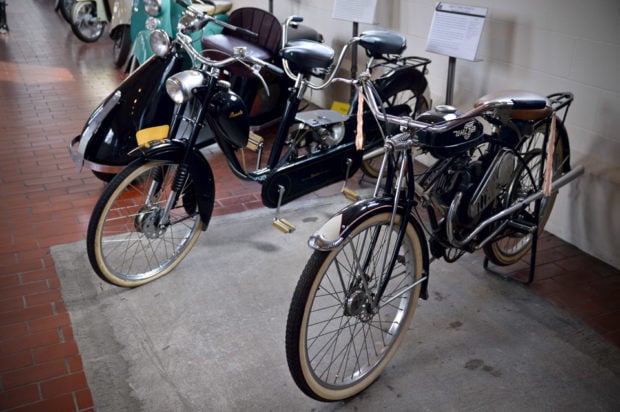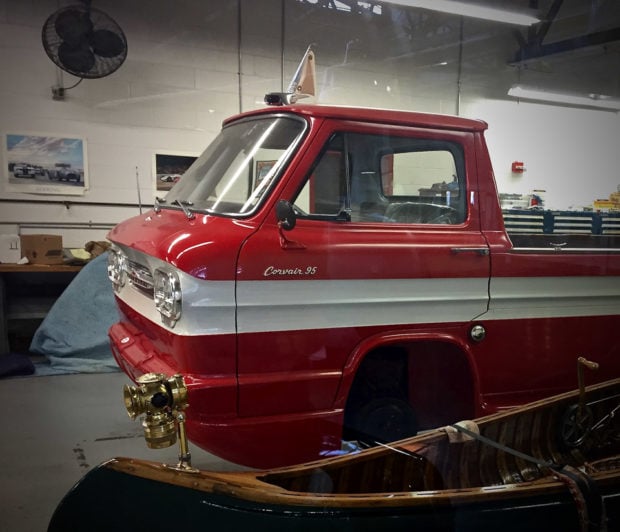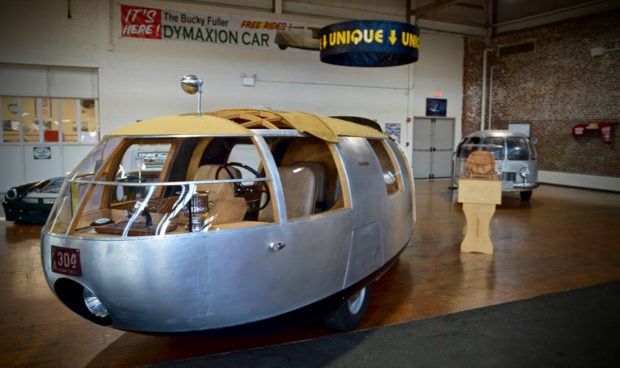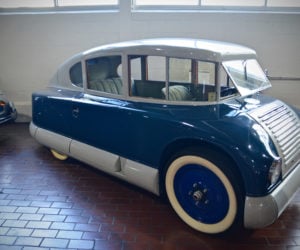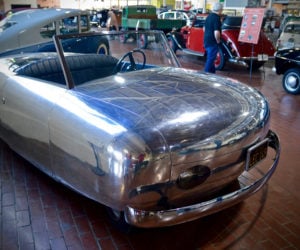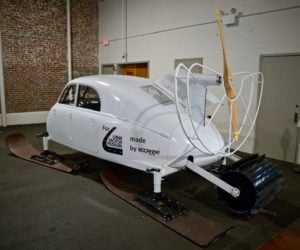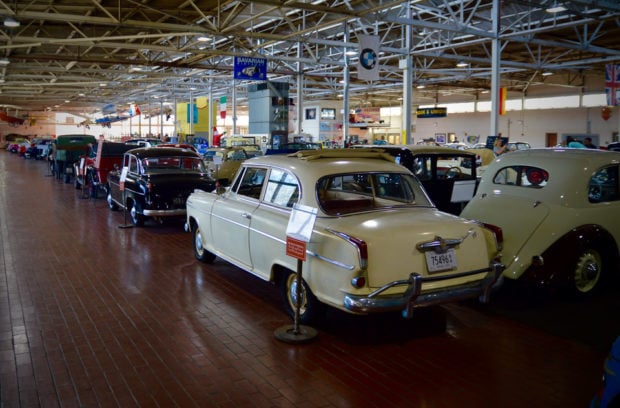A Tour of Nashville’s Lane Motor Museum
classic cars | museums | nashville

Nashville, Tennessee is the epicenter of country music and it is known for attractions such as the Country Music Hall of Fame and the Johnny Cash Museum which are both wonderful museums. However, if you visit Nashville without stopping by the Lane Motor Museum, you will miss one of the greatest collections of automobiles in the country. Housed in a repurposed bread factory in an industrial district of east Nashville, the Lane Museum is a treasure chest of rare and interesting motor vehicles. I say motor vehicles because they don’t just have a car collection, they have a collection of unique motorcycles and scooters, small aircraft, and a few boats. I went because I read an article in Hemming’s Sports and Exotic magazine about 5 years ago and they described a near fantasia of a collection of peculiar vehicles. They weren’t wrong.
Although the Lane Motor Museum isn’t huge and brimming with grandeur like the Petersen Museum or the Lemay Museum on the West coast, it is purely functional and perfectly repurposed. Their collection is huge, focusing on the cars that aren’t making the headlines of Barrett-Jackson or Mecum. While these cars aren’t spectacles of luxury and power in the classical sense, the collection is full of quirky rarity and unique subsets of the history of the automobile. The museums prides itself on having the largest collection of European cars in the United States along with an impressive collection of propellor driven cars, microcars, amphibians, military vehicles, prototypes, and many other one-of-a-kind vehicles.
I was delighted to find that unlike most car museums I’ve visited, the Lane didn’t have any barrier between the car and the attendee. I could see every angle of the cars, go up to the windows and see the interiors, examine the details of the construction, and it created a much more intimate experience in comparison to most museums.
At the time I visited, the highlighted exhibit was “Macchine Italiane”, featuring Italian engineering in cars and motorcycles. It was a large collection of very small cars. I would dare to say that 70% of the cars shared the Fiat 500 platform in some form. After a long personal argument I decided that my favorite Italian was the 1970 Fiat Giannini Camioncino Replica, which in layman’s terms is a Fiat 500 pickup truck. In a beautiful soft mint/pistachio color, the pickup caught my eye because the design worked unexpectedly well. Somehow the lines of the 500 were manipulated in a way to create a cute yet functional “truck” that was unmistakably a Fiat.
Parked about 10 feet away providing stark contrast to the Giannini, was the 1971 OTAS 820 Grand Prix. While the OTAS is also based on the Fiat 500, designers went the opposite direction and transformed the 500 into a pint-sized exotic sports car. The sweeping lines of the car reminded me of the Maserati Ghibli of the same era, but the OTAS half its size at 5 feet long and 3.5 feet tall.
Some popular Italian favorites found all over the US were there such as the Fiat 124, the X1/9, and the Alfa Romeo Spider. But then, there was the special bodied 1939 Fiat 508c Balilla 1100. The 508c was originally designed to be a people’s car; cheap, easy to work on, and reliable. It was most popularly known as the Fiat Topolino. Naturally, the Italians began racing the 508c’s competitively and this is how the gorgeous special bodied car on display came to being. Walking around the car I would never had guessed that the Ballila was based on a commoner’s car, the body had all the great lines of an exotic italian car that would compete in the Mille Miglia or the Targa Florio but it only had the power and drivetrain of a pedestrian 508c. I would still own the car in a heartbeat, it was arguably the most gorgeous piece of metal in the entire museum.
My favorite 4×4, the Ferves Ranger was also based on the Fiat 500. This bright green piece of utilitarian sunshine uses the Fiat 500 drivetrain, copying the rear engine layout but added a driveshaft to the front wheels as well. It rides on independent suspension components from the Fiat 600 . The Ranger sits four people and has a blistering top speed of 45 mph. Just like all other respectable 4x4s, the canvas top is removable and the doors are barely there. The Ferves Ranger is the Fiat 500 that can go wherever you want to go.
Next, I meandered on over to the Japanese section of the museum which housed a smorgasbord of imported cars that ranged from trucks to miniature scooters. My personal favorite was the Honda S800. The forefathers of all of the Honda sports cars people know and love today, the S800 and the S600 were never imported to the American market, there have only been a few that have finagled their way into the states through Canada and Mexico. The S800 has a small yet able 781cc engine which was sourced from their already established motorcycle production.
The bright red example at the Lane was perfect, it was gorgeously maintained and it evoked a sense of pure fun. The S800 was the first car they produced to reach 100 mph, all while keeping an impressive 35 mpg rating. It was well built and hugely influenced by the motorcycles of the day. Looking at it, you can see that the designers at honda were inspired by the popular small british sports cars of the same era like the MG Midget and the Austin Healey sprite. It’s shocking that these never appealed to Americans because given the popularity of the British competitors. The S800 and S600 were arguably more fun than the brits and leaps and bounds more reliable.
Presented right next to the Honda S800 was the 1967 Toyota Sports 800. The Toyota Sports 800 was Toyota’s first sports car. The car in the museum is 1 of 41 cars that are left hand drive sold in the US. It has a 790cc 2 cylinder horizontally opposed engine that is air cooled and produces a mind shattering 40hp. Its looks remind me of a bite-sized Toyota S2000GT which was made famous by James Bond in You Only Live Twice. Although the Toyota has 9cc’s more than the Honda, it can only go 95mph in comparison to the S800’s 100mph top speed.
I was happily surprised when I realized that there was a whole room dedicated to motorcycles. Until this, I had only seen a few sports bikes scattered in the sea of cars. The two motorcycles that stood out the most were the 1947 Schwinn Whizzer and the 2009 Aprilia RS125 Lorenzo Edition. Aprilia is an Italian motorcycle company with an impressive MotoGP racing pedigree. The reason the RS125 Lorenzo Edition stood out to me is that it just looked fast. It was painted in the livery of the 2007 world championship bike and it gave me an urge to just hop on, and ride the bike out of the museum. The RS125 Lorenzo is supposed to be a road going bike for customers that used all of the technology and engineering that the company used for its championship bike ridden by Jorge Lorenzo. Unfortunately in these United States of America the Aprilia is not street legal. This is a deceptively slow bike given its racy looks, but it is fast given its power limitations. The RS125 has a 1 cylinder 125cc engine that produces 25hp, however that 25hp can propel the bike to 96mph. After a little bit of research I have come to the conclusion that this is the step above a go kart in the motorcycle world. It’s a race bike that is the same size and same aerodynamics of a superbike but it has only a fraction of the power.
Another slow motorcycle is the 1947 Schwinn Whizzer which by modern standards would be considered a moped. The Whizzer struck me because it is gorgeous, the bicycle shape with all of the motorized elements just look so natural. The Whizzer became popular in the 1940’s because it was the perfect commuter vehicle for factory workers during the war effort. It’s a shame that these aren’t still popular, they look fantastic and they’re a fantastic idea. Of course, a renaming wouldn’t hurt, but regardless of that this should definitely be the next major movement in moped culture.
The most impressive vehicle acquired by the museum is the 1959 LARC LX. Enormous is the easiest way to describe it. This amphibious U.S. military vehicle was largest amphibian at the time at 62 feet long, 26 feet wide and 20 feet tall. It was built to transport 60 tons of military machinery from the water to land and vice versa. The mighty LARC is powered by 4 Detroit Diesel engines that drive 4 wheels and 2 propellers. The tires alone are 9 feet tall. After the LARC was purchased by the museum, it had to be driven to the museum under its own power on public streets, a 6 mile venture that took 3 hours to complete and thorough planning due the the LARC’s extraordinary dimensions. The LARC currently sits in the museum’s back parking lot where visitors can walk around it as well as underneath it. It’s hard to truly convey the size using only words and pictures, but there are plenty of videos on YouTube of the LARC flattening old cars on the Lane’s property.
The Museum is home to multiple propeller driven cars, a genre of car that I had never seen in person until visiting. Mr. Lane seems to have a fascination with propeller power because there were at least five road going vehicles on display, along with scores of small airplanes. The propellor was an automotive engineering fad in the 1920s and 30’s in France where a group of engineers thought that propellor propulsion was the way of the future for all motor vehicles. This didn’t catch on, except for the airboats in the everglades and airplanes. My favorite “aircar” was the 1930 L’Eclair. It is a one-off built by frenchman Jean Legeay. As his personal project, it was a one person car with an 8hp Indian Motorcycle V-twin engine that powered a front mounted propeller. It looks like a lovechild of a Morgan Three Wheeler and a cessna. L’Eclair in french literally translates to “flash of light”, nonetheless it did not quite reach lightspeed given that the top speed is 60 mph. Mr. Legeay you were so close, only 671 million mph to go. The L’Eclair never made it into production due to the shocking noise levels and apparently few too many chickens lost their lives due to crossing paths with the L’Eclair.
Country music idolizes the American pickup truck to no end. Every song seems to romanticize about driving down backroads in yer truck to have good times and cold beer. There is also a bit of a fascination with boats and being on a lake or the river having a grand old time. However I have yet to hear a song that mentions the Chevrolet Corphibian, which is both. By far the greatest American pickup truck ever made. It is based on the famously dangerous Chevy Corvair with a rear mounted flat six bringing power to the back wheels, but this truck is special because that engine also provides power to two propellers. The bodywork makes it appear lowered like many custom vans of the era, and it provides a fluid road hugging look. Sadly, the Corphibian was being worked on in an adjacent garage when I visited it so I couldn’t truly capture all of its glory. However, the museum says that it works and that it does indeed float. When on the water, it is able to driven from both the cabin and the truck bed. On land, the Corphibian will reach 91 mph and the water speed was unlisted. This is by far the least awkward looking amphibious vehicle I have seen, it is downright sexy. There is something about the lines of the van and the seamless incorporation of the hull that inexplicably works. This is the only Corphibian that was produced and the only one in existence today, I’m still waiting for a kit to be made so that I can have my own.
Buckminster “Bucky” Fuller was a renaissance man of his era. He was a designer, an architect, an engineer, an inventor, and an author. So, of course he had his own idea for revolutionizing the automobile. He designed the Dynamaxion which completely turned automotive design norms on their head. He put the engine in the back, the car was built using airplane construction techniques which led to an ash frame wrapped in aluminum sheet metal. That isn’t strange in comparison to the drivetrain, a rear mounted Ford V8 that powered the front wheels. It was a three wheeled car with 2 wheels at the front and one wheel in the rear. The rear wheel steered and the car had an insanely small turning radius thanks to the ability of a 90 degree lock. Overall, the vehicle was too complex for the public to realistically use it. This is an icon that represents the true forward thinking attitude from the 1930’s, that was plagued by the Great Depression. Bucky Fuller ran out of money and only 3 Dynamaxions were produced. The car in the museum is a replica of the only remaining car that is housed in the National Auto Museum in Reno, Nevada. Whether you view it as a work of genius or an overdone bad idea, it was a revolutionary design that never reached its full potential.
How do you double a car’s power? Turbochargers? No, the correct answer is double the engines. Simple. This is exactly what racing genius John Cooper did with a few Austin Minis to make the Mini twice as powerful in races and rallies. This is a replica of what came to be known as the Twini Mini, a four wheel drive, twin engined 1965 Austin Mini. It has two 1098cc 4-cylinder engines that collectively produce 130hp, one mounted in the front and one in the rear, with the driver being the center of an explosive sandwich. This example can go an estimated 110 mph. This idea didn’t last because the Twini Minis were prone to excessive tire wear caused by engine timing issues and they would also overheat easily. Regardless, it’s a cool creation and it was spectacular to see one in person.
Overall, the Lane Museum is a collection of what you don’t expect. It isn’t a collection that focuses on extreme value but rather it focuses on the interesting and the strange phenomenons that happened throughout the development of the automobile. The curious engineering ideas that never saw complete fruition. I highly recommend visiting the museum, and if that is not possible, their website has an impressive index of every car that is owned by the museum that is easy to navigate and interesting to read. Personally, I can’t wait to return and see what they have on display next time.







